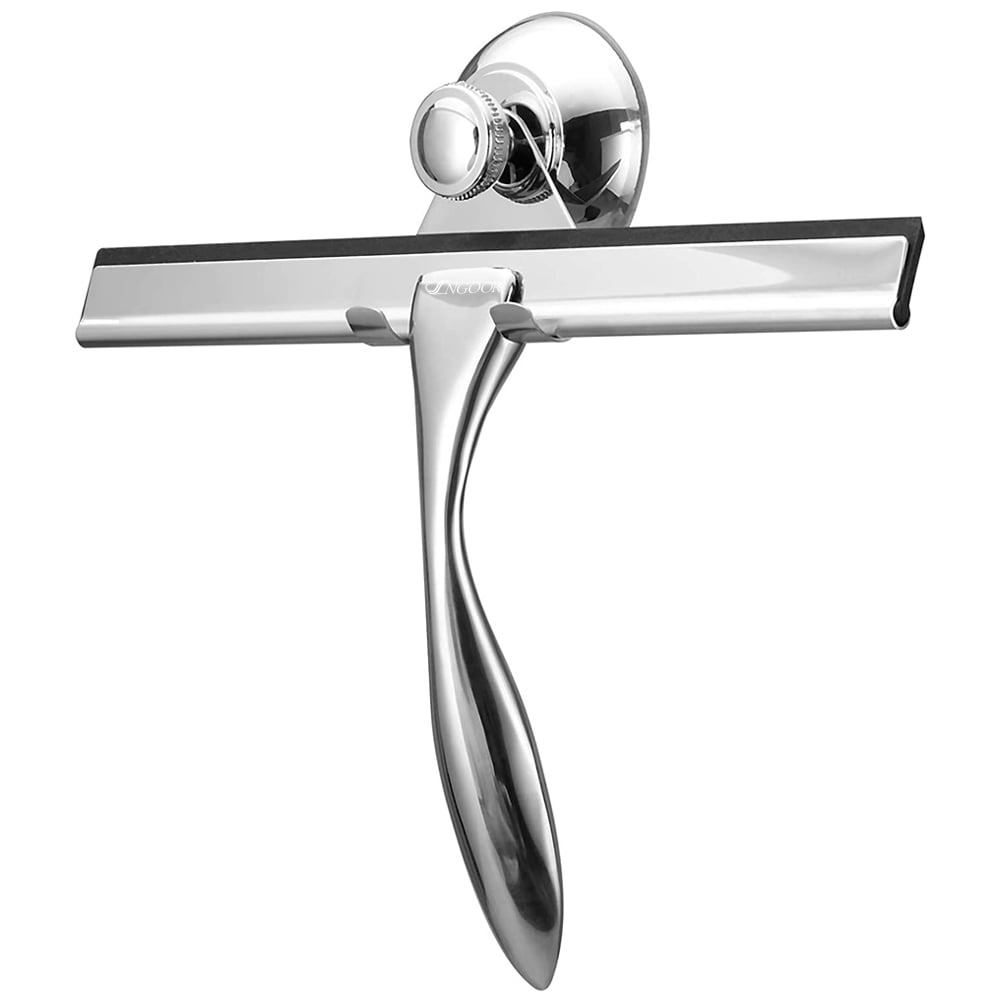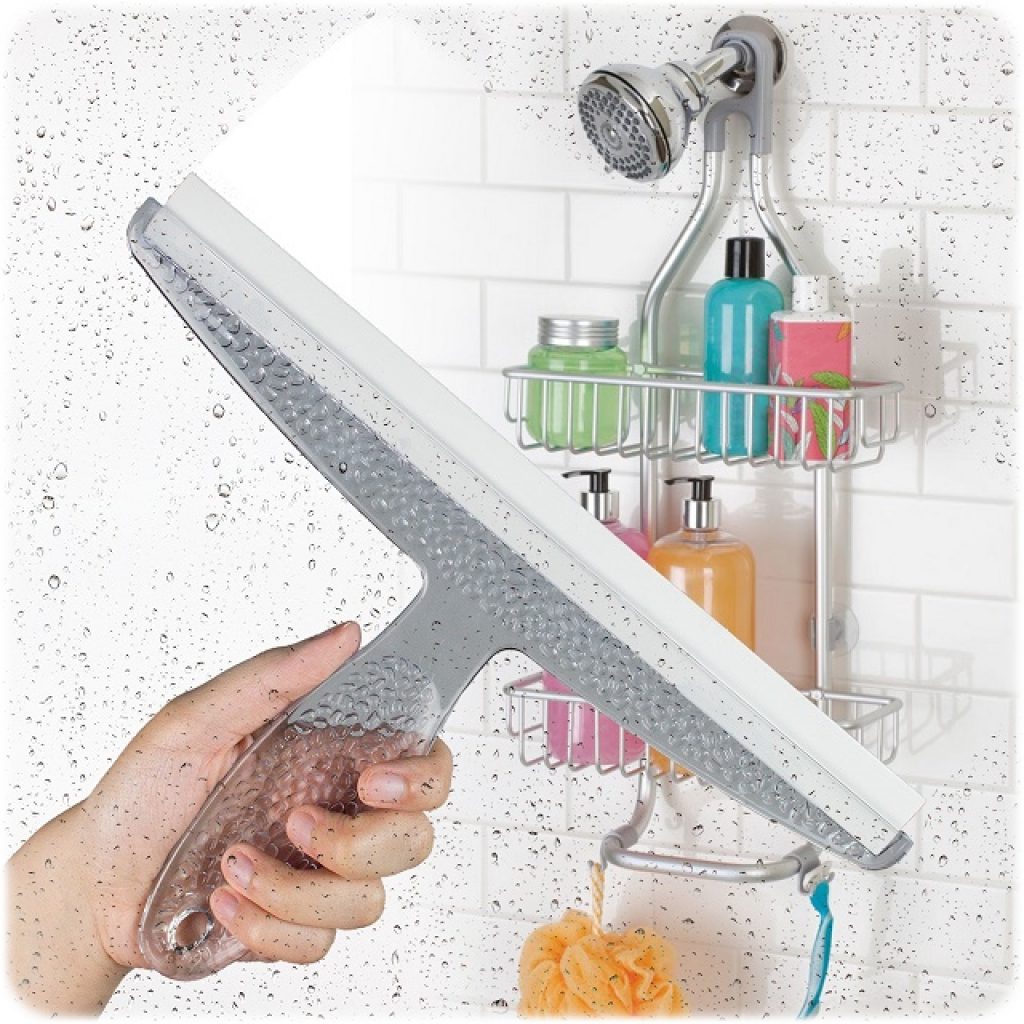The Squeegee and Its Role in Shower Door Cleaning

Maintaining a sparkling clean shower is essential for both hygiene and aesthetics. One crucial tool for achieving this is a squeegee, which plays a vital role in preventing water spots and ensuring long-lasting cleanliness.
Squeegee Types and Their Suitability for Shower Door Materials, Squeegee bathroom shower door
Choosing the right squeegee is crucial for effective shower door cleaning. The type of squeegee you select should be compatible with the material of your shower door.
- Rubber Blade Squeegees: These are the most common type and are suitable for most shower door materials, including glass, acrylic, and fiberglass. They are typically made of natural or synthetic rubber, offering a flexible and adaptable blade for cleaning various surfaces.
- Silicone Blade Squeegees: These squeegees are becoming increasingly popular due to their durability and resistance to water damage. They are particularly well-suited for cleaning glass shower doors, as silicone blades are less likely to scratch delicate surfaces.
- Microfiber Blade Squeegees: These squeegees are designed for ultimate streak-free cleaning. The microfiber blades absorb water and dirt effectively, leaving behind a spotless finish. They are ideal for cleaning glass shower doors, as they provide a gentle and scratch-free cleaning experience.
Using a Squeegee Effectively
Effective squeegee use requires a simple but methodical approach. The following steps provide a comprehensive guide for cleaning your shower doors:
- Prepare the Surface: Before using the squeegee, remove any loose debris or soap scum from the shower door using a cleaning solution and a soft cloth. This ensures a smooth and even cleaning surface.
- Apply Cleaning Solution: Spray a cleaning solution onto the shower door. Avoid using harsh chemicals that can damage the surface.
- Squeegee Technique: Hold the squeegee at a 45-degree angle to the shower door. Starting from the top, gently glide the squeegee downwards in overlapping strokes. The blade should be in constant contact with the surface, removing water and dirt.
- Wipe the Blade: After each stroke, wipe the blade clean with a soft cloth to prevent streaks.
- Clean the Corners: Use the corner of the squeegee to clean the edges and corners of the shower door, ensuring that all areas are thoroughly cleaned.
- Dry the Door: After squeegeeing, use a dry cloth to wipe down any remaining moisture. This prevents water spots from forming.
Cleaning Solutions for Shower Doors

Keeping your shower doors sparkling clean requires the right cleaning solution. Choosing the wrong product can damage your shower door, leaving it dull or even etched. This section will explore various cleaning solutions designed specifically for shower doors, helping you make informed choices for optimal cleaning results.
Types of Cleaning Solutions
Choosing the right cleaning solution depends on the material of your shower door. Different materials react differently to cleaning agents, so it’s essential to use products specifically designed for your shower door.
- Glass Shower Doors: These doors are typically the most common and can be cleaned with a variety of solutions. Vinegar and water mixtures, commercial glass cleaners, and even baking soda paste are effective for removing soap scum and hard water stains. However, avoid abrasive cleaners like scouring powders, which can scratch the glass.
- Acrylic Shower Doors: Acrylic doors are more susceptible to scratches and require gentle cleaning solutions. Avoid harsh chemicals, abrasive cleaners, and ammonia-based products. Opt for mild dish soap and water, or a specially formulated acrylic cleaner.
- Tempered Glass Shower Doors: Tempered glass is more durable than regular glass but still requires careful cleaning. Avoid using harsh chemicals or abrasive cleaners. Use a vinegar and water mixture, a commercial glass cleaner, or a specially formulated cleaner for tempered glass.
Choosing the Best Cleaning Solution
To choose the best cleaning solution, consider the material of your shower door, the severity of the stains, and your personal preferences.
- Vinegar and Water Mixture: This inexpensive and readily available solution is effective for removing soap scum and hard water stains from glass shower doors. Mix equal parts vinegar and water in a spray bottle and apply it to the shower door. Let it sit for a few minutes, then wipe it clean with a microfiber cloth.
- Commercial Glass Cleaners: These cleaners are specifically designed to clean glass surfaces and often contain ammonia. While effective for removing dirt and grime, they can be harsh on acrylic shower doors. Always check the label to ensure the cleaner is safe for your shower door material.
- Baking Soda Paste: This natural cleaner is effective for removing stubborn stains from glass shower doors. Mix baking soda with water to create a paste, apply it to the stain, and let it sit for a few minutes. Then, scrub the paste with a soft-bristled brush and rinse the shower door thoroughly.
- Commercial Shower Door Cleaners: These cleaners are specifically formulated to remove soap scum, hard water stains, and other grime from shower doors. They are typically safe for both glass and acrylic doors. However, they can be more expensive than other cleaning solutions.
Pros and Cons of Cleaning Solutions
| Cleaning Solution | Pros | Cons |
|---|---|---|
| Vinegar and Water Mixture | Inexpensive, readily available, effective for removing soap scum and hard water stains | Can be harsh on some materials, may not remove stubborn stains |
| Commercial Glass Cleaners | Effective for removing dirt and grime, available in various formulas | Can be harsh on acrylic doors, may contain ammonia |
| Baking Soda Paste | Natural cleaner, effective for removing stubborn stains | Can be abrasive, may not be suitable for all materials |
| Commercial Shower Door Cleaners | Specifically formulated for shower doors, safe for most materials | Can be expensive, may contain harsh chemicals |
Preventing Shower Door Stains and Mold: Squeegee Bathroom Shower Door

Shower doors, despite their sleek and modern appearance, are susceptible to stains and mold growth, especially in humid environments. These unsightly blemishes can detract from the bathroom’s aesthetic appeal and even pose health risks. Understanding the causes of these issues and implementing preventative measures is crucial for maintaining a clean and hygienic shower space.
Common Causes of Shower Door Stains and Mold
Stains and mold growth on shower doors are primarily caused by a combination of factors, including:
- Hard Water: Hard water contains high levels of minerals like calcium and magnesium. When water evaporates, these minerals leave behind a residue that can form unsightly stains on shower doors. The presence of iron can result in reddish-brown stains, while manganese can lead to black or brown stains.
- Soap Scum: Soap scum is a sticky residue left behind by soap and shampoo. It accumulates on shower doors, creating a breeding ground for mold and bacteria. The presence of oils and other impurities in soaps and shampoos contributes to its formation.
- Mildew: Mildew is a type of fungus that thrives in damp, warm environments. It often appears as a black or gray film on shower doors, especially in poorly ventilated areas.
Preventing Shower Door Stains and Mold
Preventing shower door stains and mold requires a proactive approach that involves addressing the underlying causes and implementing regular cleaning routines.
- Regular Cleaning: Cleaning shower doors after each use is the most effective way to prevent the buildup of soap scum, hard water stains, and mildew. A simple spray of a cleaning solution followed by wiping with a squeegee can remove any residue before it has a chance to harden. It is recommended to clean the shower doors at least once a week, even if you do not use the shower every day.
- Use a Squeegee: A squeegee is an essential tool for preventing water spots and streaks on shower doors. After showering, use a squeegee to remove excess water from the glass surfaces, leaving them dry and free of residue. A squeegee can be purchased at most hardware stores or online.
- Ventilate the Bathroom: Good ventilation is crucial for preventing mold growth. Ensure your bathroom has a working exhaust fan and use it whenever showering. Opening a window after showering can also help to improve ventilation and reduce humidity levels.
- Use a Water Softener: If you have hard water, installing a water softener can significantly reduce the mineral content in your water, preventing the formation of hard water stains. Water softeners are available in various sizes and can be purchased from plumbing supply stores.
- Choose Soap and Shampoo Carefully: Opt for soaps and shampoos that are low in oils and other impurities. These products will produce less soap scum and reduce the risk of stains and mold growth.
- Avoid Over-Using Cleaning Products: While regular cleaning is important, using harsh chemicals or over-applying cleaning products can damage the shower door’s finish. Use a mild cleaning solution and avoid scrubbing aggressively.
Creating a Cleaning Schedule
A consistent cleaning schedule can help maintain shower door cleanliness and prevent future problems.
- Daily: Squeegee the shower door after each use to remove excess water and prevent water spots. Wipe down the door with a microfiber cloth to remove any remaining residue.
- Weekly: Clean the shower door with a mild cleaning solution and a soft cloth or sponge. Pay special attention to areas where soap scum or hard water stains tend to accumulate. Rinse the door thoroughly with water and dry it with a microfiber cloth.
- Monthly: Inspect the shower door for any signs of mold growth. If mold is present, clean it with a bleach-based solution or a commercial mold remover. Follow the product instructions carefully and wear protective gloves and a mask during application.
Squeegee bathroom shower door – Squeegeeing my shower door is like a daily workout. I swear, the water droplets are like tiny ninjas, always finding a way to escape. Maybe I should just give up and embrace the “lived-in” look, but then I remember how much I love my gray bathroom and how a shower curtain for gray bathroom would look amazing.
But then again, I’d have to clean the curtain too, and that’s just another chore, right? Maybe I’ll just keep battling those ninja water droplets with my trusty squeegee.
You know, I’m starting to think my shower door squeegee is more like a prop than an actual cleaning tool. I mean, I’m not sure it’s ever actually removed a single water droplet! Maybe the real problem is my shower head, which seems to have developed a personality of its own.
It’s like it’s saying, “Hey, why bother with a squeegee when you can just leak everywhere?” This guide might be my only hope! Anyway, back to the squeegee. I guess it’s a good reminder that even the most well-intentioned tools can’t fix a leaky shower head.